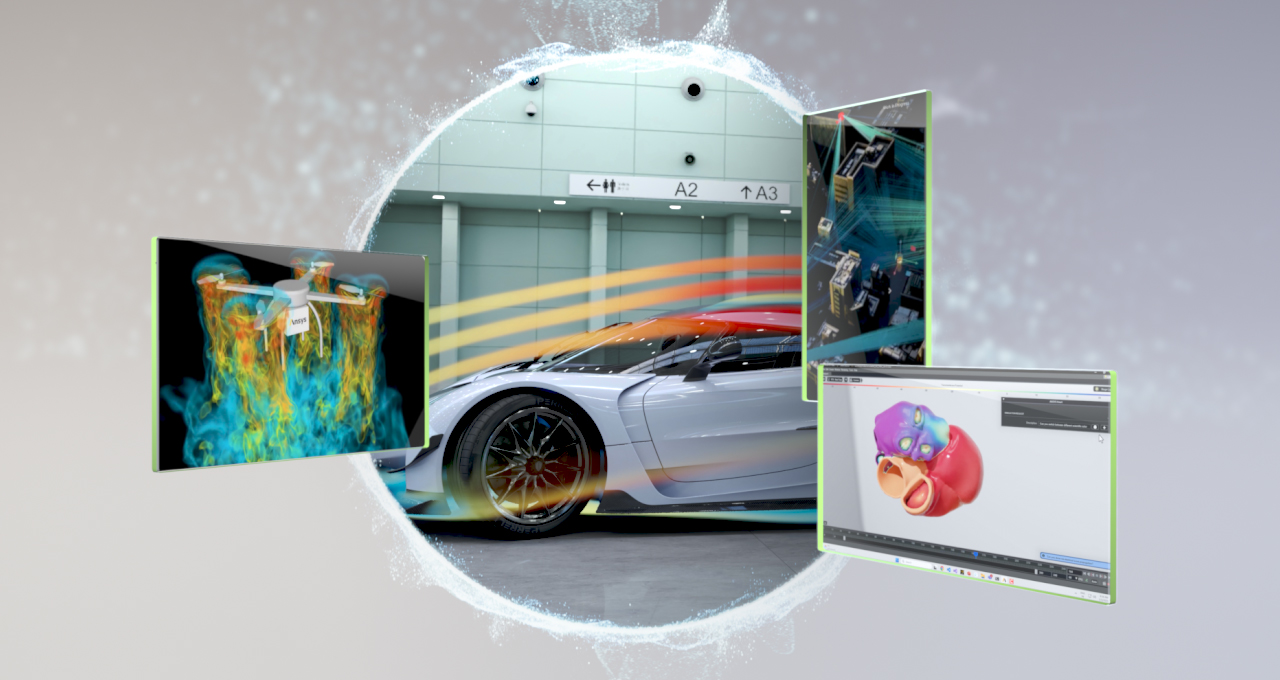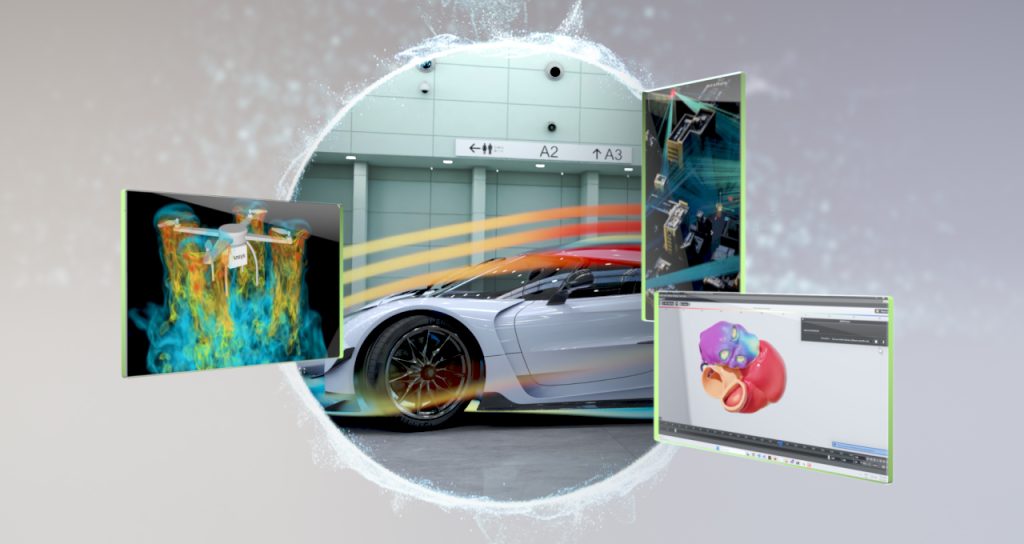
Editor’s note: This post is part of Into the Omniverse, a series focused on how developers, 3D practitioners and enterprises can transform their workflows using the latest advances in OpenUSD and NVIDIA Omniverse.
Computer-aided engineering (CAE) is at the forefront of modern product development, enabling engineers to virtually test and refine designs before building physical prototypes. Among the powerful CAE methods, computational fluid dynamics (CFD) simulation plays a critical role in understanding and optimizing fluid flow for use cases, such as aerodynamic testing in aerospace and automotive engineering or thermal management for electronics.
The NVIDIA Omniverse Blueprint for real-time digital twins provides a powerful framework for developers to build complex CFD simulation solutions with the combined power of NVIDIA CUDA-X acceleration libraries, NVIDIA PhysicsNeMo AI framework and NVIDIA Omniverse, and Universal Scene Description (OpenUSD).
Multiphysics simulation generates a high diversity of data with optical, thermal, electromagnetic and mechanical applications, all requiring different inputs and outputs.
OpenUSD provides a unified data model that connects the CAE ecosystem so digital twins can operate in real time with diverse data inputs. This seamless interoperability between tools is crucial for engineering efforts that rely on accurate, consistent CFD simulations.
Industry Leaders Deliver 50x Faster Simulation
At NVIDIA GTC in March, NVIDIA announced that leading CAE software providers, including Ansys, Altair, Cadence, Siemens and Synopsys, are accelerating their simulation tools, including for CFD, by up to 50x with the NVIDIA Blackwell platform.
Thanks to accelerated software, NVIDIA CUDA-X libraries and performance-optimization blueprints, industries like automotive, aerospace, energy, manufacturing and life sciences can greatly reduce product development time and costs while increasing design accuracy and remaining energy efficient.
Ansys, a leader in simulation software, is harnessing the power of NVIDIA technologies for real-time physics and accelerated simulation with AI-driven digital twins. By integrating NVIDIA GPUs and tapping into Blackwell’s advanced accelerated computing capabilities, Ansys software enables engineers to run complex CFD simulations at unprecedented speed and scale.
Real-Time Digital Twins for CFD
Ansys is also adopting Omniverse and OpenUSD to create more connected, collaborative simulation environments for CFD. Ansys users can build real-time digital twins that integrate data from multiple sources, and now those multidisciplinary CFD simulations can be integrated into the visually rich Omniverse environment.
Learn more about how Ansys is using NVIDIA technologies and OpenUSD to advance its CFD workflows in this livestream replay:
Get Plugged Into the World of OpenUSD
Join NVIDIA GTC Taipei at COMPUTEX, running May 19-23, to see how accelerated computing, Omniverse and OpenUSD advance 3D workflows. Watch NVIDIA founder and CEO Jensen Huang’s COMPUTEX keynote on Monday, May 19, at 11 a.m. Taiwan Time.
Ansys Simulation World is a virtual and in-person global simulation experience. The virtual event takes place July 16-17, and includes a keynote from Huang that will provide a closer look at the transformative power of accelerated computing and AI to enable computational engineering breakthroughs – including CFD – across all industries. Until then, watch Ansys GTC sessions on demand to learn more.
Discover why developers and 3D practitioners are using OpenUSD and learn how to optimize 3D workflows with the new self-paced “Learn OpenUSD” curriculum for 3D developers and practitioners, available for free through the NVIDIA Deep Learning Institute.
For more resources on OpenUSD, explore the Alliance for OpenUSD forum and the AOUSD website.
Stay up to date by subscribing to NVIDIA Omniverse news, joining the community and following NVIDIA Omniverse on Instagram, LinkedIn, Medium and X.
Featured image courtesy of Ansys.


